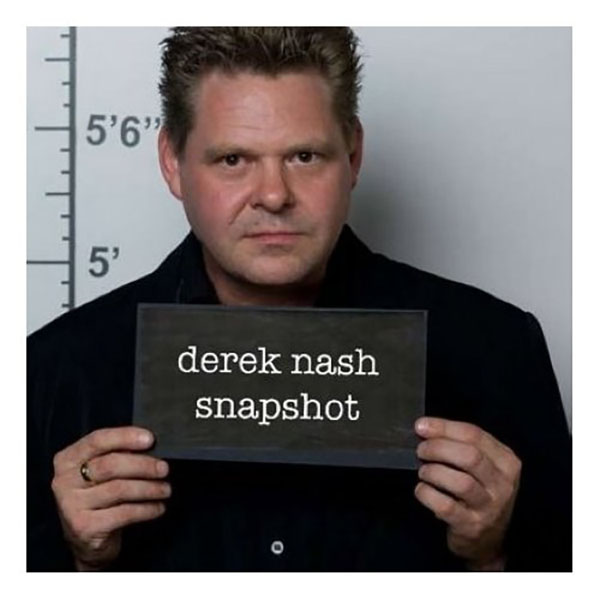
by Ian Mann
September 10, 2009
/ ALBUM
Nash's first straight ahead jazz recording for some years is an album of simple intentions executed with warmth, charm and skill
The name of saxophonist Derek Nash has cropped up a lot on this site lately. This is because the man never stops making music in some capacity or other. He leads the bands Sax Appeal and Protect The Beat, both highly popular attractions on the live circuit, plays high profile sessions and gigs with the likes of Eric Clapton, Paul McCartney and Jools Holland and also finds time to run his own recording studio and record label. The label is Jazzizit which he co directs with singer Trudy Kerr and the studio is Clown’s Pocket ( where both of these albums were recorded) from where Nash as engineer and producer has delivered literally dozens of albums, all to the same high technical standards. He’s one of the stalwarts of British jazz and one whose contribution is sometimes overlooked.
“Snapshot” came about almost by chance. In his engineer/producer role Nash was recording Trudy Kerr’s album “Deja Vu” ( an album reviewed elsewhere on this site). The session was completed ahead of schedule and Nash suggested to the instrumentalists involved that he joined them in recording a “blowing session” rather in the style of the classic Blue Note albums of the 50’s and 60’s. Nash was particularly keen to do something with Swedish pianist Jan Lundgren who had flown in to guest on Kerr’s album and with the studio already set up the opportunity was too good to miss. Joining Nash and Lundgren are the classy rhythm section of Geoff Gascoyne (bass) and Steve Brown (drums).
The material was chosen from the tunes Nash had been playing on the “guest soloist with house band” circuit and is based on the charts he uses on those sessions. In the hands of such professionals these take on an extra lustre and the result is an unpretentious album that swings easily and encompasses some great playing all round. The pieces Nash has selected are an engaging mix of songbook standards, bebop, hard bop and soul jazz items plus an obscure Ellington tune and most surprisingly a thoroughly convincing take on Pat Metheny’s “Farmer’s Trust”.
Although best known as an alto player Nash is adept on all four main members of the saxophone family and he also deploys soprano, tenor and baritone here. The quartet kick off with a lazily swinging version of tenor saxophonist Hank Mobley’s “Soul Station”, the title track of his 1960 Blue Note classic.
The same relaxed but swinging feel continues through Grover Washington’s “Winelight”. In some ways “Snapshot” is an ideal late night jazz album, laid back enough to chill out to but possessed of enough swing and musical sophistication to repay serious listening.
“Farmer’s Trust” is one of Pat Metheny’s most beautiful and enduring tunes despite the fact that it never made it onto one of his studio albums (it was on the 1982 ECM live double set “Travels”). Lundgren is heard at his most lyrical here and there is also a passage for Gascoyne’s warmly rounded bass. Nash’s delicately keening soprano catches the mood of Metheny’s original almost perfectly.
Rogers and Hart’s “Falling In Love With Love” is taken at a faster tempo than usual which gives Nash the chance to stretch out on alto, normally his main horn. Lundgren shows his ability to swing at the piano, he’s a talented bebop improviser whose classical training gives him a remarkable clarity of line. After years of perfecting his technique playing music of mainly American origin Lundgren has since utilised the folk music of his native Sweden as a basis for jazz improvisation. His albums “Swedish Standards” and “European Standards” are the subject of a feature elsewhere on this site.
Nash then takes up the baritone for another standard, Jimmy Van Heusen and Johnny Burke’s “Polka Dots And Moonbeams”. He is remarkably tender and assured on the larger instrument in this wonderful ballad performance. Lundgren’s thoughtful piano complements Nash perfectly and Gascoyne’s bass is again featured, the whole sympathetically supported by Brown’s economical brushwork.
A playful version of Neal Hefti’s “Li’l Darlin’” incorporates an early feature for the rhythm section with Brown soloing using just brushes, always a difficult feat. The track then takes off with Nash on tenor, sometimes honking joyously, and a swinging Lundgren. Great fun.
Nash’s Ellington piece shies away from the obvious choices. “My Love” is drawn from the composer’s “Sacred Concerts”.Here it is beautifully presented as a feature for Nash’s feathery soprano in tandem with Lundgren’s similarly delicate piano. Appropriately empathic support is provided by the ever dependable Gascoyne and Brown.
“Five Brothers” is a Dave Grusin arrangement of the classic Gerry Mulligan tune that deploys playful counterpoint. Once again Nash shows a remarkable agility on baritone; as on the earlier “Polka Dots And Moonbeams” it could almost be Mulligan himself playing. Grusin’s fun arrangement also provides for enjoyable breaks for bass and drums.
The closing standard “I’m Glad There Is You” (by Jimmy Dorsey and Paul Madeira) is a languid but gently swinging ballad that features Nash’s smoky tenor alongside Lundgren’s subtly inventive piano. There’s a solo feature for able bassist Gascoyne too.
Recorded in an afternoon with everything done first or second take this is an album of simple intentions executed with charm and skill. It’s Nash’s first straight ahead jazz album for some years and is a timely reminder of this aspect of his talent.
blog comments powered by Disqus